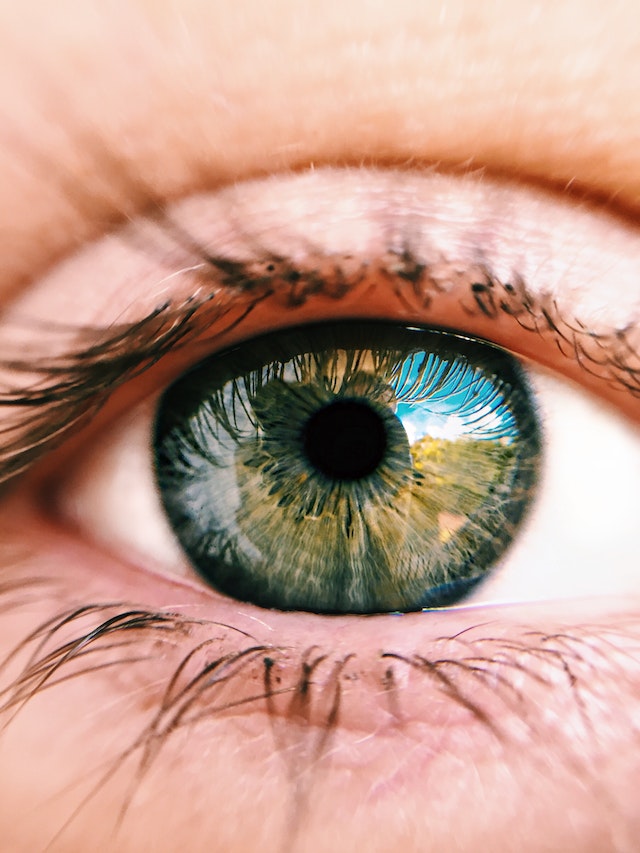Just as there are diseases that affect more according to age or ethnicity, there are also pathologies that have a greater impact on one or the other sex (beyond those that affect specific organs of each body).
In general, heart disease, and some types of cancer such as colorectal cancer, liver complications, or hypertension are more prevalent in males. On the other hand, cardiovascular problems, osteoporosis, rheumatoid arthritis, multiple sclerosis or thyroid diseases are more associated with women.
But does the same happen in visual health? Do eye diseases affect one sex or the other more? According to the WHO, yes: there is a higher prevalence of eye problems in women than in men. Undoubtedly, the main reason is that women have a longer life expectancy than men and many eye problems are associated with old age.
In addition, we must add natural issues (hormonal changes in a woman’s life are directly related to some eye diseases), and social issues: gender differences at the economic level and access to health services.
What are eye problems in women?
In addition to blindness, there are various eye problems in women that affect more than men. These are some examples
Trachoma
This eye disease is caused by an infection of the Chlamydia trachomatis bacteria and, if not treated correctly and on time, it can cause blindness. In fact, it is the leading preventable cause of blindness worldwide. The first symptoms are itching and mild irritation on the eyelids. As it develops, swelling of the eyelids increases and pus forms in the eyes.
85% of the world population with trachoma resides in poor areas of the African continent and it is especially prevalent in children under five years of age. Therefore, since women play the role of caregivers, they are much more exposed to this disease.


Glaucoma
The hormonal changes that women experience in their different biological stages have a great impact on intraocular pressure, and this, in turn, is directly related to glaucoma. Unlike trachoma, this disease has no cure, and in fact, is the leading irreversible cause of blindness in the world.
One of the most serious issues with glaucoma is the difficulty of early diagnosis: it does not cause pain and hardly presents any symptoms, the patient simply gradually loses vision, almost without realizing it.
Dry eye syndrome
Menopause greatly affects women’s eye health, and dry eye is one of the most common complications. In fact, in many cases, it is a sign of the climacteric and the end of the menstrual period. This ocular complication is quite annoying, and generates a constant sensation of grit in the eye, burning and a lot of itching.
Autoimmune diseases
Women are also more prone to some autoimmune diseases, such as lupus, Sjögren’s syndrome, or hyperthyroidism, which have a serious impact on eye health.
Also read: What Should Be Your Expectations on Vision after Laser Eye Surgery?
In what periods of her life is the woman most vulnerable to eye problems?
As we said, the hormonal changes that women go through throughout their lives have an impact on their eye health. Unlike male bodies, women are subject to many hormonal changes at different times in life: puberty and menstruation, pregnancy, lactation, climacteric, and menopause.
In addition, to this, we must add the use of contraceptives, which are usually hormonal, and certain medications that also interfere with the hormonal cycle.
Therefore, if it is important to take care of your visual health in general, it is even more so at potentially critical moments. For example, eye care during pregnancy is especially delicate and important.
How to prevent eye conditions in women?
Nutrient-Rich Diet
Nourish your eyes by incorporating a diverse range of fruits, vegetables, whole grains, lean proteins, and healthy fats into your daily meals. These foods provide essential vitamins like vitamins C and E, minerals like zinc, and beneficial compounds like omega-3 fatty acids and lutein/zeaxanthin.
Such nutrients have been linked to reducing the risk of age-related macular degeneration (AMD) and cataracts, helping to maintain clear and healthy vision for years to come.
Regular Exercise
Engaging in regular physical activity not only benefits your overall well-being but also contributes to better eye health. Exercise promotes healthy blood circulation, ensuring that the eyes receive an adequate supply of oxygen and essential nutrients.
Additionally, maintaining a healthy weight through exercise helps reduce the risk of conditions like diabetes, which can have a detrimental impact on vision. So, lace up those sneakers, hit the gym, or explore outdoor activities to give your eyes the exercise they deserve.
Proper Eye Protection
Shielding your eyes from potential hazards is paramount in preserving their health. Invest in high-quality sunglasses that provide 100% UV protection to safeguard your eyes from harmful ultraviolet rays.
Whether you’re working in a dusty environment, engaging in sports activities, or using chemicals, wearing appropriate safety goggles provides an extra layer of defence against eye injuries. By prioritizing eye protection, you can enjoy peace of mind knowing that you’re taking proactive steps to maintain your precious vision.
Regular Eye Examinations
Don’t overlook the importance of routine eye examinations in safeguarding your eye health. Regular visits to an optometrist or ophthalmologist allow for comprehensive assessments of your vision and early detection of any potential issues. These eye exams can detect refractive errors, such as nearsightedness or astigmatism, ensuring that you have the correct prescription for clear vision.
Additionally, eye care professionals from God Service Eye Clinic can identify and manage common eye conditions like dry eye syndrome, glaucoma, and age-related macular degeneration (AMD) to prevent further progression and preserve your visual well-being.
Limiting Screen Time
In the digital age, prolonged screen time has become ubiquitous, and it can take a toll on your eyes. To reduce eye strain and discomfort, it’s essential to practice healthy screen habits.
Implement the 20-20-20 rule: every 20 minutes, take a 20-second break and focus on something 20 feet away to give your eyes a rest. Adjust the brightness and contrast of your screens to reduce glare, and consider using anti-glare filters or wearing blue-light-blocking glasses to mitigate the effects of digital eye strain. Additionally, maintaining proper posture while using electronic devices can alleviate strain on your eyes and neck.
Remember, adopting these lifestyle practices and seeking professional eye care will help you maintain optimal eye health, ensuring that your vision remains clear and vibrant as you navigate through life’s adventures.


